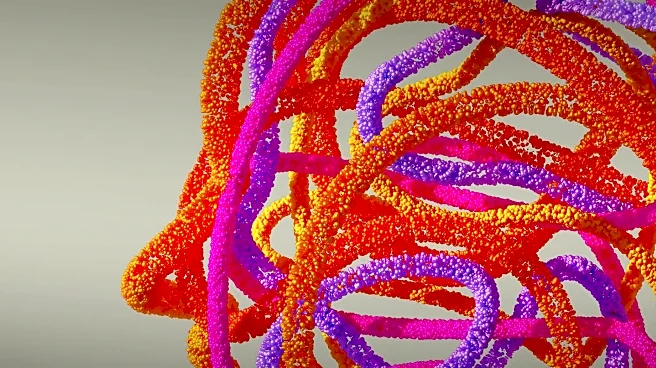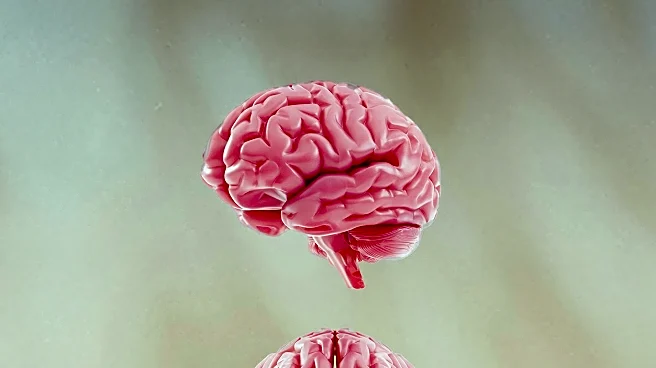What's Happening?
Researchers at Tokyo Metropolitan University have made significant strides in understanding Alzheimer's disease by applying concepts from polymer physics. Led by Professor Rei Kurita, the team discovered
that tau protein fibrils, which are central to Alzheimer's pathology, do not form suddenly. Instead, they emerge after large clusters of tau proteins gather in solution, resembling polymer crystallization. By disrupting these early clusters, the researchers prevented fibril formation, suggesting a promising new direction for Alzheimer's treatment. This approach focuses on stopping the reversible precursor stage before harmful structures develop, potentially influencing research on other neurodegenerative diseases like Parkinson's.
Why It's Important?
The findings from Tokyo Metropolitan University offer a potential shift in Alzheimer's treatment strategies. Traditionally, efforts have focused on breaking apart the final fibrils. However, targeting the precursor stage could prevent the formation of harmful structures altogether. This approach not only holds promise for Alzheimer's but could also impact the understanding and treatment of other neurodegenerative diseases. As global populations age, the burden of Alzheimer's and similar conditions is expected to rise, making innovative treatment strategies crucial for public health.
What's Next?
The research team suggests that therapies could be developed to target the precursor stage of tau protein fibril formation. This could lead to new drug development focused on altering sodium chloride levels and using heparin to disrupt early tau clusters. Further studies are needed to explore the efficacy of this approach in clinical settings and its applicability to other neurodegenerative diseases. The research was supported by various grants, indicating ongoing interest and investment in this promising area of study.
Beyond the Headlines
The application of polymer physics to Alzheimer's research highlights the interdisciplinary nature of modern scientific inquiry. By drawing on concepts from materials science, researchers are able to gain new insights into complex biological processes. This approach underscores the importance of cross-disciplinary collaboration in tackling some of the most challenging medical issues of our time.











